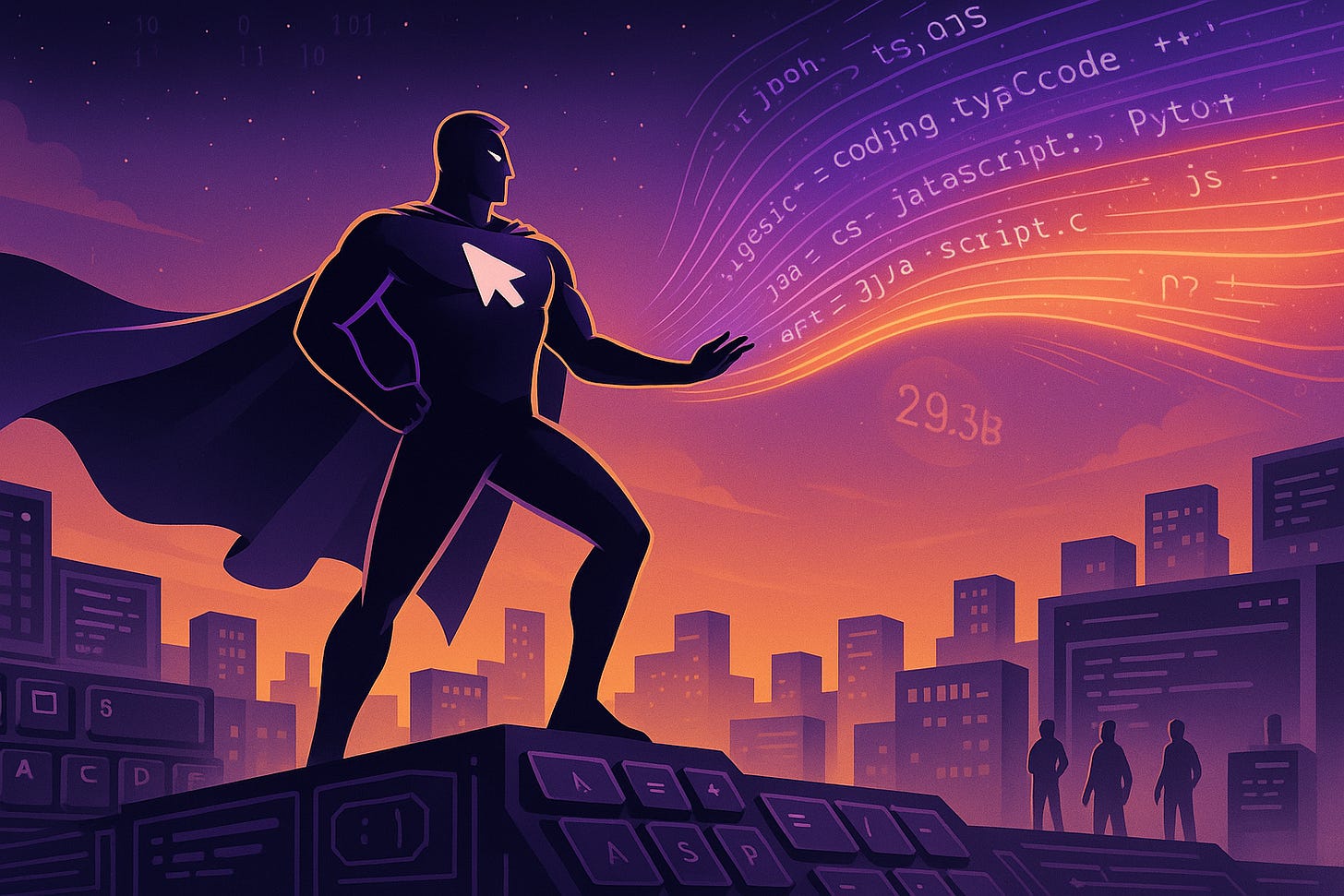The news landed Thursday: Anysphere raised $2.3 billion at a $29.3 billion valuation, nearly tripling its value in five months. For context, that’s more than Stripe was worth in 2021. For a three-year-old coding tool.
This isn’t just another funding announcement. It’s the market declaring that AI-powered development has moved from experimental to essential—and Cursor has captured the category the way Copilot defined autocomplete.
The Copilot Parallel
Remember when GitHub Copilot launched in 2021? Developers were skeptical. “It’ll never understand context.” “It’s just fancy autocomplete.” “Security nightmare.” Fast forward three years: GitHub Copilot has 1.8M+ paying users and 97% adoption among Fortune 500 development teams.
Cursor is following the exact same trajectory, but compressed. The company hit $1 billion in annualized revenue and achieved what investors are calling “the fastest growth of any startup of all time”—not because of marketing spend (they have essentially none), but because developers at OpenAI, Uber, Spotify, and even Major League Baseball embedded it into daily workflows organically.
The difference? Copilot made developers faster at writing code. Cursor changes how they write code entirely.
Why This Valuation Makes Sense
The typical reaction to a $29 billion valuation for a coding tool: “That’s insane.” But consider what Cursor actually represents.
Accel and Coatue co-led the round, with Google and Nvidia participating to “deepen partnerships.” When cloud giants and chip makers write checks together, they’re not validating a product—they’re hedging against platform shifts.
The addressable market isn’t the $4-12 billion AI coding tools sector. It’s the entire $500 billion global software engineering spend, plus the productivity cascade when software creation accelerates exponentially. CEO Michael Truell’s thesis: “Coding will be the single biggest driver of global productivity over the next decade.”
The evidence supporting that claim keeps mounting. Cursor’s October launch of Composer—their agentic coding model handling multi-file edits and entire workflows autonomously—represents something beyond autocomplete. Developers at Stripe, OpenAI, and Figma describe a fundamental shift: they’re not writing code faster anymore, they’re writing it differently.
Table Stakes, Not Optional
For CTOs and engineering leaders, the strategic calculation has shifted. The question is no longer “Should we adopt AI coding tools?” It’s “How quickly can we deploy them before competitors do?”
Cursor is quickly becoming the Copilot of the agentic era—the capability teams now assume will be in the stack. When NVIDIA’s Jensen Huang calls it his “favorite enterprise AI service” and Google’s Sundar Pichai demonstrates using it for “vibe coding”, that’s not endorsement—it’s acknowledgment that this is how software gets built now.
Teams ignoring AI coding tools aren’t just slower—they’re working under a different productivity model entirely.
The Next Phase Is Already Emerging
And while Cursor validates the current wave, the next phase is already forming.
CLI-driven multi-agent orchestration and programmable development workflows represent the logical evolution beyond even Cursor’s capabilities. These approaches treat AI agents as coordinated teams rather than enhanced assistants, enabling systematic automation of entire development processes—not just code generation.
Think about the trajectory: autocomplete (Copilot) → agentic editing (Cursor) → orchestrated development workflows (emerging). Each phase doesn’t replace the previous one; it builds on it while unlocking new categories of automation.
CLI-driven multi-agent orchestration hasn’t hit the mainstream yet. Most organizations are still grappling with basic AI coding assistance. But early adopters building multi-agent development systems today are establishing competitive advantages that will compound over 12-18 months.
What This Means for Your Organization
Immediate Assessment:
Where is your organization on the AI coding adoption curve? Experimentation, pilot programs, or systematic deployment?
What percentage of your development team uses AI coding tools daily? If it’s under 50%, you’re falling behind baseline productivity expectations.
Have you evaluated Cursor specifically, or are you relying on incumbent relationships with GitHub/Microsoft?
Strategic Considerations:
Cursor’s $29 billion valuation validates the category, but also signals intense competition and rapid evolution. Tool selection matters, but adoption velocity matters more.
The productivity gains are real—organizations report 40-60% faster feature delivery in controlled environments—but they require workflow changes, not just tool installation.
Security and governance frameworks need updating. AI coding tools require system access that traditional development tools don’t. Have your security teams assessed the implications?
Forward Planning:
Monitor emerging orchestration frameworks and multi-agent development approaches. The teams experimenting with these now will define next-generation development practices.
Build internal expertise in prompt engineering and AI workflow design. The competitive advantage isn’t just having the tools—it’s using them effectively.
Consider that Cursor’s rapid rise suggests market consolidation may accelerate. Vendor stability and ecosystem integration matter for long-term tooling decisions.
The Bottom Line
Cursor’s $29 billion valuation isn’t hype—it’s the market pricing in a fundamental shift in how software gets built. The same way Copilot made autocomplete table stakes, Cursor is making agentic coding assistance the baseline expectation for modern development organizations.
The companies that figure out adoption first—not just tools, but workflows, governance, and systematic integration—will have 12-18 months of competitive advantage before these capabilities become universally available.
And while Cursor validates the current wave, the next phase is already forming. The question isn’t whether to adopt AI coding tools. It’s whether you’re moving fast enough to capitalize on the current wave while positioning for what comes next.
I’m Bob Matsuoka, writing about agentic coding and AI-powered development at HyperDev.



